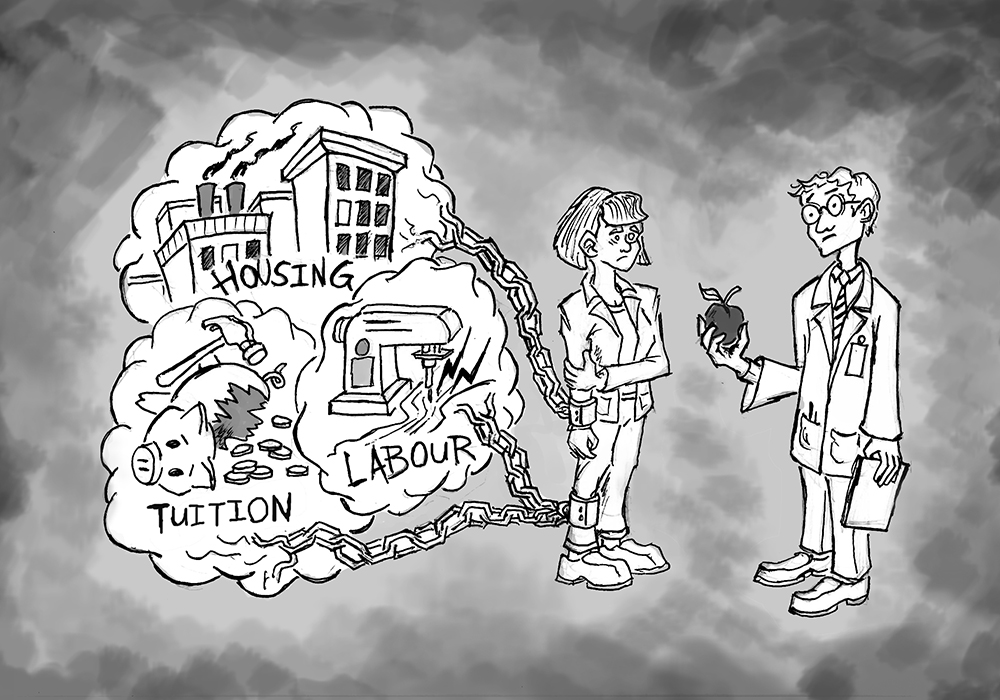Professor Dennis Raphael has a unique take on addressing issues pertaining to health care. In a first-year course, he asks his students about what they feel matters most in health care. Typical responses such as healthy eating, exercise, and abstinence from drugs and alcohol are offered. He nods his head cynically and dismisses the students’ responses. What really matters in taking care of one’s health, he says, is money.
Raphael is a professor in York’s School of Health Policy and Management. He is a prolific researcher, having contributed more than 250 scientific publications focusing on the social determinants of health, from income inequality and poverty to the impact of government decisions. Not many people see health care from a sociopolitical perspective, which is probably why Raphael nails down the role of SDOH to his first-year students.
“SDOH is relevant,” says Raphael, “because everyone who works and studies at York is concerned about their health and these are the factors that will determine if they live long, healthy lives or short, sick lives.” The many factors at play include everything from the person’s socioeconomic status, ethnicity, and gender to the type of neighbourhood they live in and even the university they attend.
According to Raphael, these factors are just as important as nutritional, genetic, or clinical determinants of health care, if not more. And though the Canadian health care policy has recognized this since 1974, Raphael emphasizes that little has been done by one government after another to improve standards of living and by doing so have a positive effect on health care in Canada. Nor has the issue been brought up much in the mainstream media.
The use of food banks by Canada’s post-secondary students is illustrative of how social determinants affect Canadians’ health care.
“At Food 4 Thought, the York Federation of Students Food Bank, 750 individual members have signed up this past year, which is up from the 500 hundred members who signed up the previous year to access the food bank,” says Chenthoori Malankov, VP of Campaigns and Advocacy at the YFS.
“The food bank records between 500 and 750 individual visits every month, and during the 2014/2015 school year an annual total of over 7500 individual visits were recorded, making it the most visited food bank on any university campus in Canada.”
Raphael sees this as a perfect example of the health care needs of a focus group not being addressed because they are not approached from a socioeconomic perspective. “The fact that they say the food bank is successful is actually a failure of Canadian policy to address the needs of York students,” he says.
Malankov makes reference to statistics that support this argument. “This is primarily due to the fact that tuition fees have increased 238 per cent since 1991, with the average debt load at graduation of $28,000,” she says. “Youth unemployment and underemployment is at a record 27.7 per cent, while there has been a 17 per cent increase in housing costs in the past three years.”
In such conditions, it is not entirely surprising that students would cut their budget on food and rely on their campus food bank.
“It is a positive sign,” says Malankov, “that students facing the challenges of food security are becoming more aware of the resources available to them within the York community. The stigma once associated with food banks is slowly dissipating and through the work of the food bank, fewer students have to go hungry.”
However, she recognizes that the social determinants of the problem cannot be overlooked. “This also shows that the public education system and York in particular is becoming less affordable, less accessible, and less accommodating to those in the margins of society,” she adds.
Raphael believes that the lack of academic attention to the SDOH contributes to the general neglect of the topic in Canada. Even though York offers several courses on the subject, such as Social Determinants of Health, far more students learn about health care only from a nutritional or physiological approach.
“There is a disconnect between the public policy approach and the approach that emphasizes kinesiology and health science,” says Raphael. “This is clearly evidenced in the fact that there are 2,800 kinesiology students but only 75 health policy students at York.That is very much a reflection of how Canadian society sees relative importance of each approach.”



Learn more! Take Social Determinants of Health, HLST 3010 in the fall or winter through the School of Health Policy and Management, Faculty of Health or Poverty and Health, HLST 3510 during S1 session in May 2016.